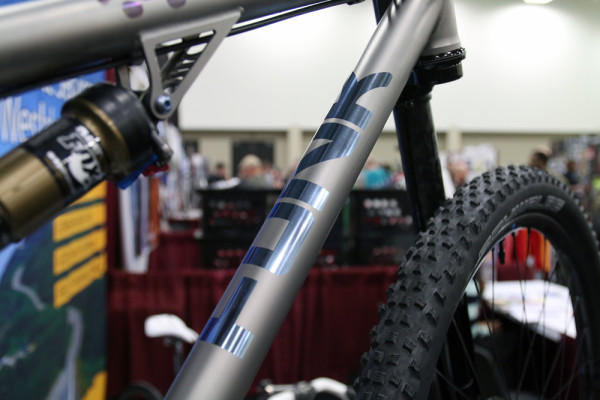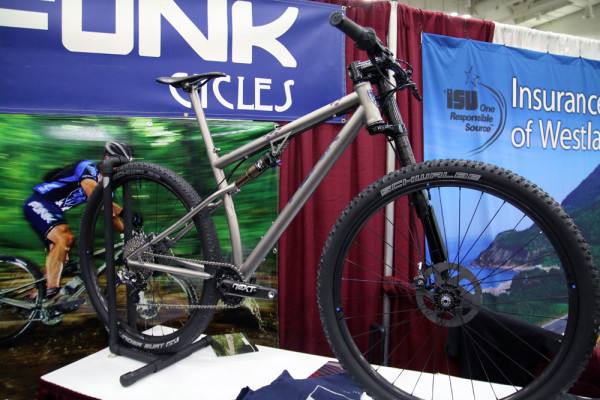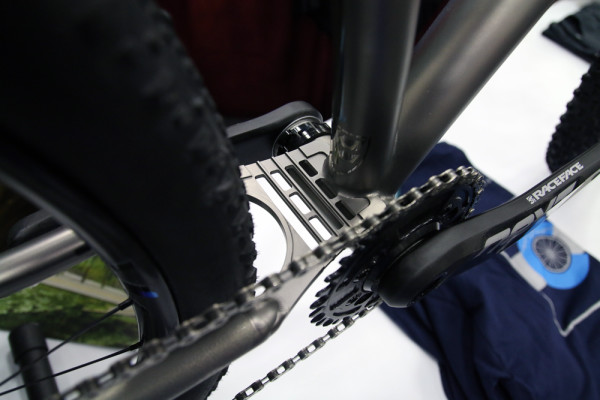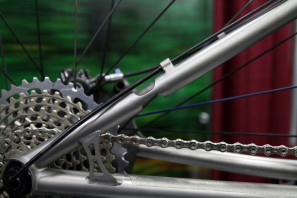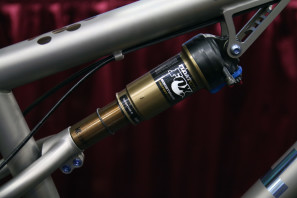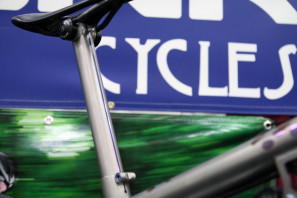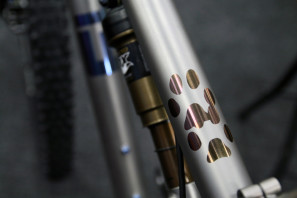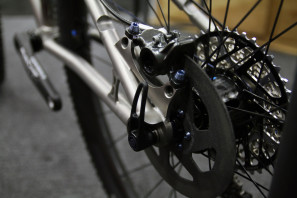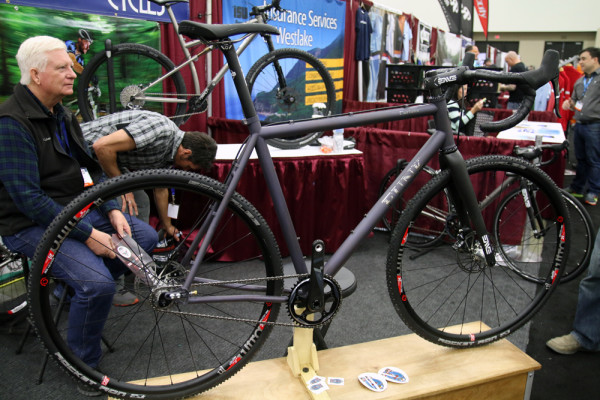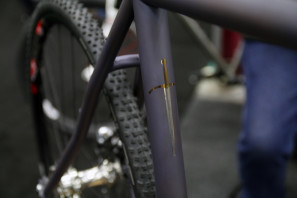Likely one of the most performance oriented mountain bikes you could find at NAHBS, Funk Cycles’ sharp La Ruta build was also one of the lightest. That is, at least when it comes to full suspension. Certainly one of the very few full suspension bikes at the show anywhere near 20 lbs, the La Ruta also features some incredible detail work including custom anodized graphics. The Funk team might not have gone home with any awards from the show, but they clearly demonstrated their ability to build incredible titanium bikes…
It might not look like it from the onset, but that is a 20 lb titanium full suspension bicycle. Funk points out that they could have gone even lighter with parts like a carbon seat post but they wanted to build a bike that was to their liking and 100% shreddable. Built by hand in the front range of Colorado, each Funk is crafted from seamless, cold worked and stress relieved titanium – in this case, 3AL/2.5V tubing and 6AL/4V for the flex plate.
That carefully machined flex plate and flex points at the seat stays allows for 80mm of pivotless, bushingless suspension travel and sub-20 lb builds. Built with simplicity and durability in mind, the frame comes in at 4.5 lbs for a medium with shock. Built with Paragon dropouts, the 142×12 thru axle build shown here is optional.
Displaying the finish work of Dan Harvey, the La Ruta also takes titanium finishing to the next level. One of the few companies experimenting with titanium anodizing, Dan used his background in physics to figure out what was actually going on at the surface to allow for these custom finishes. According to Dan, anodizing titanium creates a layer of oxidation and it’s the thickness of that layer that determines the color. That means that the stronger the voltage that is applied through the liquid electrolyte, the thicker the layer. Colors start off as a bronze color and then change over to purple and then to blue as the voltages is increased. In order to anodize smaller sections of the frame, Dan uses an electrified paint brush of sorts that allows him to spot anodize sections and then mask off the designs so they can be blasted to make the final shape.
Those paw prints on the top tube? Those are recreations of the actual muddy prints Dan’s dog left through his kitchen. Good dog? The anodizing even extends to the titanium spring found on the XX1 rear derailleur.
To help get he build to 20 lbs this La Ruta rolls on Kappius wheels and carbon rotors.
Funk also had their new Curtana cyclocross bike on hand which features a completely anodized frame rather than anodized graphics. Built with adjustable vertical dropouts, the Curtana looks like a dialed Ti cross bike for single speed or CX1 use.
